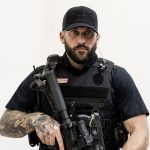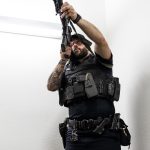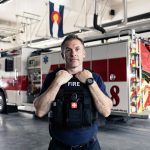
Texas sb 12 grant is open – Apply NOW






Body armor is often categorized by many attributes, including function, brand, level of protection or sometimes even materials. So how do you begin your research for the best products? It can get overwhelming in a space where flak jackets, bulletproof vests and Kevlar seem to reign supreme in descriptions and articles. Let’s differentiate between materials, brand names and societal trends within the body armor space.
A Kevlar vest is a type of soft body armor made of Kevlar material primarily worn by first responders. Its purpose is to stop or significantly slow down bullets or other projectiles to protect the wearer’s vital organs.
Kevlar armor pops up in most searches when researching body armor. It may surprise you to know that Kevlar itself is simply the registered trademark for a type of bullet or stab-resistant para-aramid synthetic fiber. Kevlar fabric or fiber was developed at Dupont back in 1965 and has become commonplace in the body armor industry. It’s usually spun into ropes or fabric sheets that can be used on their own or as a component within a composite material. Kevlar has a high tensile strength-to-weight ratio making it five times stronger than steel and thus a great addition to most soft body protection products. It was first used commercially in the 70s as a replacement for steel in car racing tires but eventually found its way into the body armor market. It has since become the most commonly used material in soft body armor.
Kevlar is not a standalone body armor product. You can purchase Kevlar fiber directly from Dupont. However, in the body armor space, Kevlar is more likely to act as a component of a composite protective material. While technically a Kevlar vest isn’t an actual standalone product, Kevlar material is one of several options available that meets the soft body armor requirements NIJ has put in place.
Unlike a material element like Kevlar, flak and flak jackets have a different history and role in the body armor space.
Before discussing the role of the bulletproof vest in today’s body armor industry, it’s important to understand that the term itself isn’t accurate. No body armor product on the market can truly be considered ‘bulletproof.’ While body armor manufacturers do their best to anticipate special threats, there will always be a weapon, bullet or circumstance that can lead to bullet penetration. Though commonly known as bulletproof vests, we are referring to bullet-resistant vests per NIJ standards. The idea of a military or police bulletproof vest is to absorb the impact and reduce or stop bullets or shrapnel penetration to the body. Soft bulletproof vests are made of dozens of layers of fibers that act as a barrier to different ammunition and guns. The material within these laminated fibers is often Kevlar. Soft body armor vests act as a first layer of protection and can be paired with trauma plates for additional protection against higher-level threats. For example, every Angel Armor’s RISE Body Armor vest on its own can meet either NIJ Level II or Level IIIA standards. When paired with Truth SNAP rifle plates, the system offers tiered protection up to NIJ Level III.
Bulletproof vests date back to the 1500s among Italian and Roman royalty. By the 1800s the Japanese were creating soft body armor using layers of silk. The US began to spend more time researching soft body armor options in the early 1900s, and the invention of the flak jacket helped lead the way to more advanced threat protection. It was the invention of Kevlar that really propelled the industry forward and led to the creation of the more modern bulletproof vests we see today.
While not a perfect comparison, Kevlar, flak jackets and bulletproof vests all play a role in the body armor industry. When looking for the right body armor products, consider the threats your team my face. And as always, refer to NIJ to ensure your selection meets the standards needed to offer the highest level of protection.
Angel Armor offers numerous armor packages in a variety of performance tiers, all tested to the NIJ 0101.06 standard and backed by proper CPL certifications. These packages are available in NIJ Level II and Level IIIA threat levels and come in five distinct performance tiers that vary in weight, thickness, and price. The soft armor panels are compatible and interchangeable with all RISE Carriers and can be used in conjunction with Truth SNAP Rifle Plates.
Want to learn more about the RISE Body Armor System?
Reach out to a knowledgeable member of our sales team at sales@angelarmor.com.
Drop us a line, and we will get back to your promptly!
Drop us a line and we will get back to you promptly!